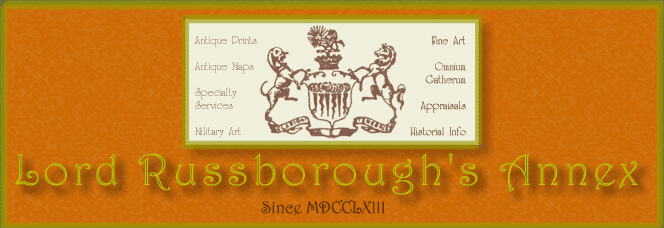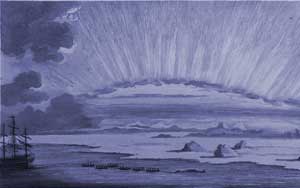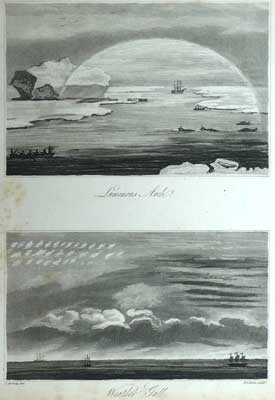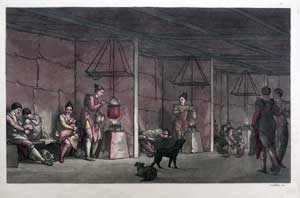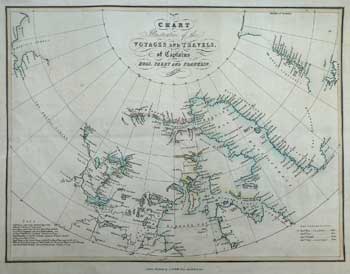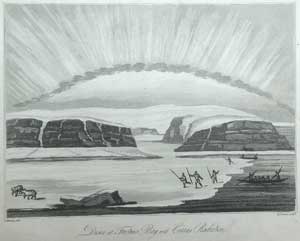
DISCO AT FORTUNE BAY WITH CIRRUS RADIATION
Frederick Christian Lewis after S. Koenig
Aquatint. 7 3/16 x 8 ½” (18.2 x 21.5 cm.)
Ref. LRAarc133 /AL/ l.dnsv > DNN
Published in Bernard O’Reilly “Greenland, the adjacent seas, and the North-west Passage to the Pacific Ocean, illustrated in a voyage to Davis's Strait, during the summer of 1817. ...” London, Baldwin, Craddock and Joy, 1818.
Depicted are two large boats paddled by native Greenland Inuit, which have landed at some shore ice in Fortune Bay. Inuit with spears, appear to be in pursuit of two bears. The layered strata of the rocky coast are in evidence. The cirrus clouds were made of ice spheres that reflected solar radiation. Much taken by the formation of clouds, on the subject of which, O’Reilly had undertaken considerable reading. This meteorological observation was made on Disco Island off the western coast of Greenland. The voyage was made by the whaling ship Thomas (William Brass, Master) out of Hull, on 8 March 1817 with O'Reilly serving as ship's surgeon.
Title page states that the plates are taken from drawings done by the author on the spot.
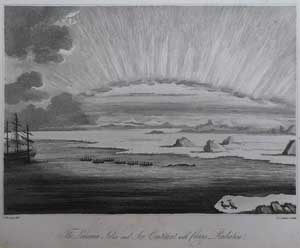
THE LINNÆAN ISLANDS AND ICE CONTINENT WITH CIRRUS RADIATION
Frederick Christian Lewis after S. Koenig
Aquatint. 6 ¼ x 7 7/8” (15.8 x 20 cm.)
Ref. LRAarc106 /AN/ l.dnsg > DNN
Published in Bernard O’Reilly “Greenland, the adjacent seas, and the North-west Passage to the Pacific Ocean, illustrated in a voyage to Davis's Strait, during the summer of 1817. ...” London, Baldwin, Craddock and Joy, 1818.
“July 16th. The ship advancing towards land on a S.E. course, came in with an extensive field of ice reaching to the Linnæan Isles: this field was interspersed with numerous bergs, and appeared unbroken for leagues in extant east and west. The state of the cloud this day, beautiful cirrocumulus, and flimsy comoid cirrus, the points of which were scattered in every direction.” O’Reilly p.194. In this view five of the Thomas ships’ boats are seen, one of them towing a whale toward the ship at the left. The Linnæan islands were observed to be about seven miles away.
A pair of Greenland Doves (Colhmbus grylle) is depicted in the right foreground.
